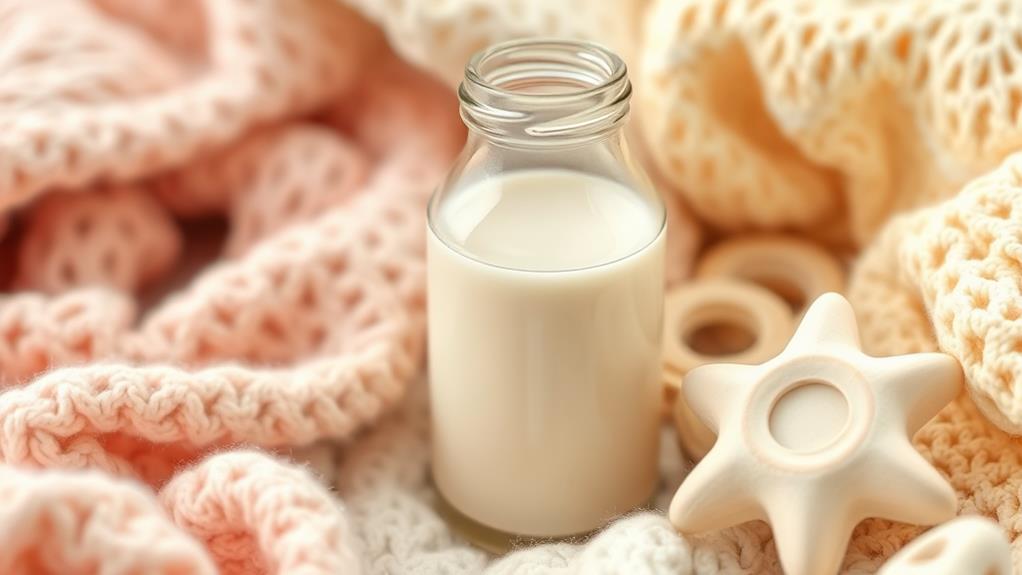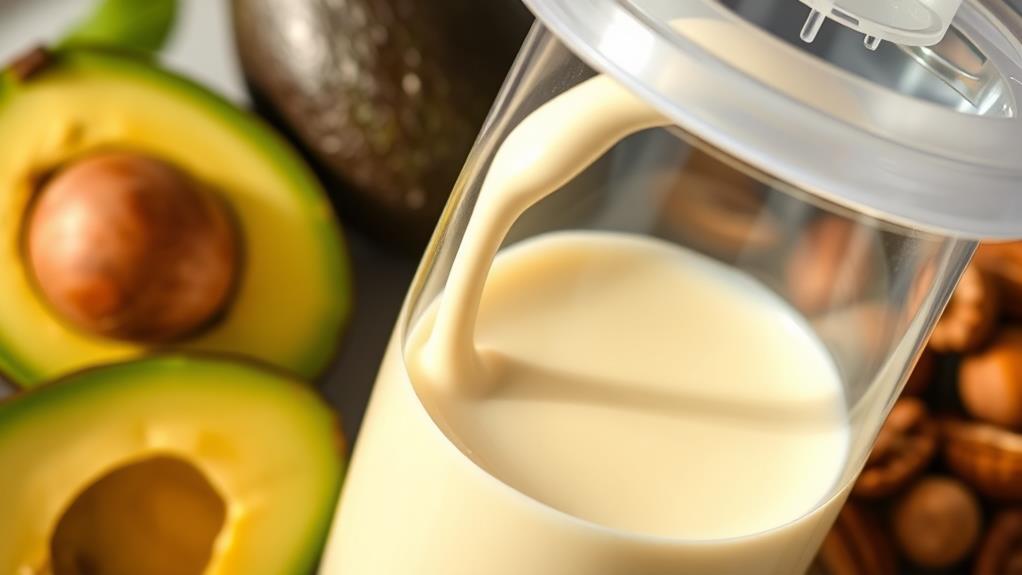If you've noticed an unusual taste or smell in your expressed breast milk, you might be dealing with high lipase levels. While this condition is safe, it can lead to feeding difficulties for your infant, which can be concerning. Understanding what causes high lipase and how it affects your milk is crucial for effective management. You may be wondering about practical strategies to ensure your baby accepts the milk without issues. Let's explore the options available to you and what steps you can take to navigate this situation effectively.
Understanding High Lipase Milk

Have you ever wondered why some breast milk has a different taste or smell after pumping? If you've noticed a soapy taste or a metallic scent, you might be dealing with high lipase milk. This means your breast milk contains higher levels of an enzyme called lipase, which can break down fats more quickly. When this happens, taste changes can occur, sometimes within just a few hours to a few days after pumping.
But don't worry! High lipase milk isn't harmful to your little one. However, some infants might refuse it, which can make your breastfeeding journey a bit tricky. It's all part of the adventure, right?
If your stored milk has that off-putting flavor, you can try scalding your milk right after pumping. This helps inactivating the lipase activity, giving you the fresh taste your baby loves.
Just remember, freshly pumped milk usually tastes best! Identifying high lipase milk involves a simple taste test, so don't hesitate to give it a sniff or a sip.
Managing your expressed milk effectively can make all the difference in your infant feeding experience!
Effects on Feeding
Infants frequently react to high lipase milk differently, which can impact their feeding experience. If your baby notices a soapy taste or a strange smell in the milk, they might refuse to drink it. This feeding refusal can make it tough for you to ensure they get the nutrition they need.
While high lipase milk is safe, its unique flavor can lead to some fussiness during feeding times.
Don't worry, though! Some babies may adapt over time to the taste of high lipase milk. It's important to keep an eye on their feeding cues to see if they're willing to try it again.
If your little one turns up their nose at the milk, consider mixing it with freshly expressed milk to improve acceptance. Another option is to scald the milk before storing it, which can help mask that off-putting taste.
Just remember, you're not alone in this! Many parents face similar challenges with high lipase milk, but with a little creativity and patience, you can keep your baby happy and well-fed.
After all, every drop of milk counts when it comes to your baby's nutrition!
Causes of High Lipase

High lipase levels in breast milk can stem from several factors that vary among individuals.
First off, genetic factors can play a big role. Some people just naturally have higher lipase levels than others. Hormonal changes during lactation and what you eat can also influence lipase activity. So, if you notice a soapy or metallic taste in your stored milk, that might be a clue!
When milk is frozen, the lipase can become even more active, which might change the taste and smell over time. You might start to notice these symptoms as early as 12-14 hours after expressing your milk.
It's important to remember that not everyone experiences high lipase milk; it only affects a small percentage of breastfeeding parents.
While high lipase can alter the taste, it doesn't mean your milk's quality or nutritional value is compromised. Many moms face this during their breastfeeding journey, so you're not alone!
If you're concerned, don't worry; you'll find ways to handle it, but understanding the causes is the first step.
Management Strategies
Navigating the challenges of high lipase in breast milk requires practical strategies to ensure your baby still enjoys feeding time. One effective method is scalding breast milk before storing it. Heat it to 180°F (82°C) to deactivate lipase, which reduces any off-putting flavors and smells while keeping it safe for your little one.
You can also try mixing high-lipase milk with freshly pumped milk in a 50/50 ratio. This can help mask the altered taste, making it more appealing for your baby.
Remember to cool your milk immediately after expressing and follow proper storage guidelines, like using airtight containers, to preserve its flavor and quality.
Consulting a lactation expert can provide you with personalized strategies for managing high-lipase milk effectively. They can guide you on optimal storage techniques and feeding practices.
Experimenting with serving high-lipase milk chilled or at room temperature might also enhance infant acceptance. It's all about finding what works best for you and your baby. After all, feeding time should be a joyful experience, not a guessing game!
Support and Resources

When it comes to managing high lipase in breast milk, a variety of support and resources are available to help you through the process. You don't have to navigate this alone! Consulting a certified lactation consultant can be a game-changer. They offer tailored advice and strategies for effectively handling high lipase milk, ensuring your little one gets the best feeding experience.
Online classes like "Mamas Milk Mastery" are also great for learning about breastfeeding challenges, including high lipase. You can find practical solutions for storing and freezing your milk, so it tastes fresher when it's time to feed.
Plus, community engagement through newsletters provides helpful tips that make managing high lipase a little easier.
Don't forget about La Leche League! They've discussions about how your dietary habits can impact lipase levels, giving you more insight into your situation.
Resources like articles from Simply Rebekah and Kellymom are also fantastic for finding additional strategies to tackle those non-fresh tasting milk issues.
With the right support, you can confidently handle high lipase and enjoy your breastfeeding journey!

